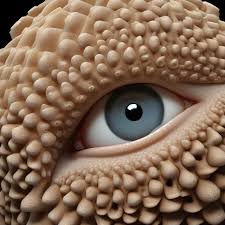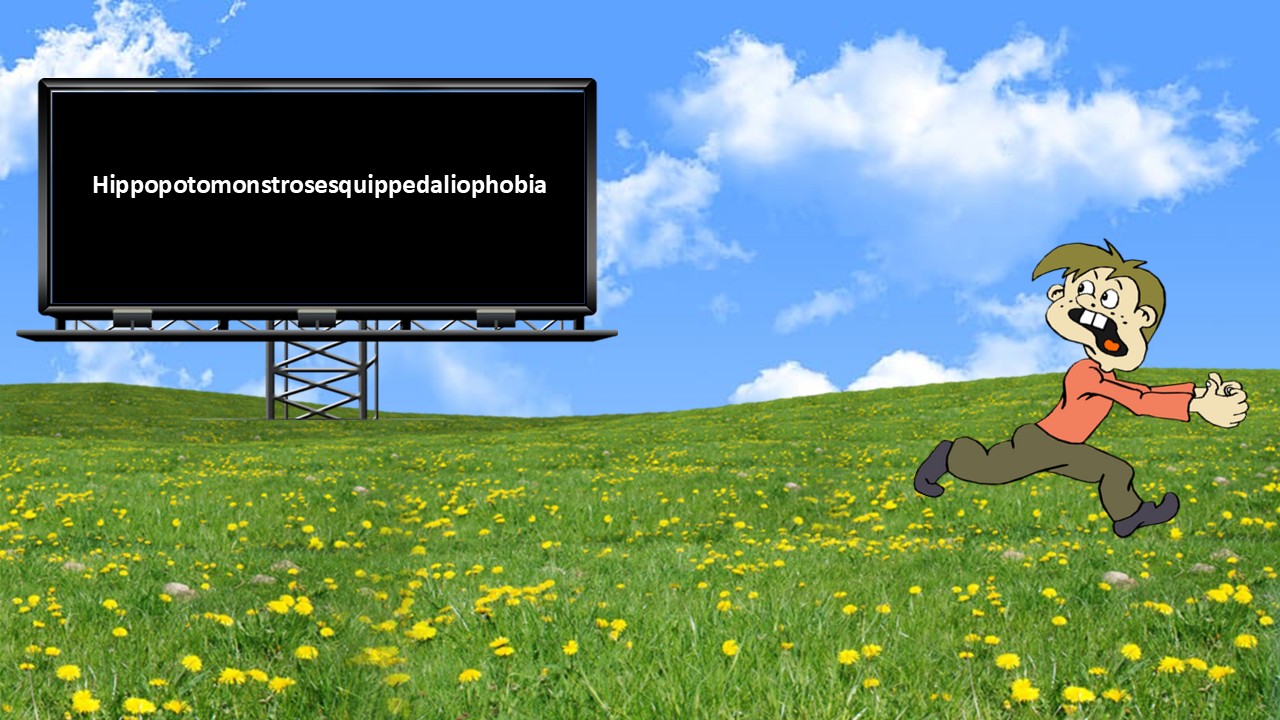Phobias are powerful manifestations of fear, deeply rooted in human psychology and history. Derived from the Greek word ‘phobos‘, meaning “fear” or “panic,” phobias have played a vital role in our survival over centuries. In mythology, Phobos was even revered as the personification of fear, inspiring caution in battle and beyond.
At their core, phobias are protective instincts. The fear of heights (acrophobia) or dangerous animals (cynophobia) prompts us to avoid harm, safeguarding our well-being. However, when these fears spiral into irrational and uncontrollable reactions, they can disrupt daily life. Take claustrophobia (fear of confined spaces), for example—it can lead individuals to avoid elevators or public transportation, limiting their freedom. Similarly, glossophobia (fear of public speaking) might prevent someone from pursuing career opportunities.
This article dives into the fascinating world of phobias, uncovering fears you might never have thought existed. From the common to the truly obscure, you’ll gain insight into the quirks of the human mind and how these fears shape our behaviors. Whether it’s arachnophobia (fear of spiders) or the lesser-known trypophobia (fear of repetitive patterns), this guide is here to broaden your understanding of phobias and their impact on people’s lives.

How to Manage Your Fears: Practical Strategies for Overcoming Anxiety
Managing phobias effectively involves a combination of therapeutic techniques, self-help strategies, and professional support. However, the first essential step is identifying the root cause of your fear. Take time to reflect on what triggers your anxiety. Journaling or talking to a trusted friend can help you uncover these patterns. The following approaches can empower you to take control of their fears and improve their quality of life. These include:
Exposure Therapy:
Gradual exposure to the feared object or situation helps desensitize the individual over time. For example, someone with a fear of elevators might start by looking at pictures of elevators, then progress to standing near one, and eventually riding it.
Cognitive Behavioral Therapy (CBT):
CBT helps individuals identify and challenge irrational thoughts associated with their phobia. It combines exposure techniques with strategies to reframe negative thinking patterns.
Mindfulness and Relaxation Techniques:
Practices like deep breathing, meditation, and progressive muscle relaxation can reduce anxiety and help individuals stay calm when confronted with their fears.
Positive Psychology Approaches:
Techniques such as gratitude exercises, goal setting, and focusing on personal strengths can complement traditional therapies and improve overall well-being.
Digital Tools and Online Resources:
Apps and online therapy platforms have become increasingly popular for managing phobias. These tools provide guided exercises, virtual exposure therapy, and access to mental health professionals.
Medication:
In some cases, medications like beta blockers or sedatives may be prescribed to manage severe anxiety symptoms during specific situations, such as flying or public speaking.
Let’s journey through the A-Z of phobias, uncovering the quirks of the human mind and the wide range of fears that shape our world!
Click on the letters A-Z to discover more.
A
Achluophobia – Fear of darkness (e.g., avoiding unlit areas).
Acrophobia – Fear of heights (e.g., avoiding tall buildings or mountains).
Aerophobia – Fear of flying (e.g., refusing to board airplanes).
Ailurophobia – Fear of cats (e.g., avoiding homes with cats).
Algophobia – Fear of pain (e.g., extreme fear of medical procedures).
Androphobia – Fear of men (e.g., avoiding male-dominated spaces).
Anthophobia – Fear of flowers (e.g., discomfort near floral arrangements).
Anthropophobia – Fear of people (e.g., isolating oneself socially).
Aquaphobia – Fear of water (e.g., avoiding swimming pools or lakes).
Arachnophobia – Fear of spiders (e.g., panicking at the sight of spiders).
Astraphobia – Fear of thunder and lightning (e.g., hiding during storms).
Autophobia – Fear of being alone (e.g., constant need for companionship).
Aviophobia – Fear of flying (e.g., experiencing anxiety before a flight).
B
Bacteriophobia – Fear of bacteria (e.g., excessive handwashing).
Barophobia – Fear of gravity (e.g., worry about falling objects).
Bathmophobia – Fear of stairs or steep slopes (e.g., avoiding hilly areas).
Bathophobia– Fear of depths, such as deep water or vast spaces.
Bibliophobia – Fear of books (e.g., reluctance to enter a library).
Botanophobia – Fear of plants (e.g., avoiding gardens).
C
Catoptrophobia – Fear of mirrors (e.g., avoiding reflections).
Chronophobia – Fear of time (e.g., anxiety about future events).
Claustrophobia – Fear of confined spaces (e.g., avoiding elevators).
Claustrophobia – Fear of confined spaces (e.g., discomfort in elevators).
Coulrophobia – Fear of clowns (e.g., avoiding circuses).
Cyberphobia – Fear of technology (e.g., reluctance to use computers).
Cynophobia – Fear of dogs (e.g., avoiding parks with dogs).
D
Dendrophobia – Fear of trees (e.g., refusing to walk in forests).
Dentophobia – Fear of dentists (e.g., skipping dental appointments).
Domatophobia – Fear of houses (e.g., discomfort entering homes).
Dysmorphophobia – Fear of body deformities (e.g., obsession over perceived flaws).
E
Ecophobia – Fear of the home (e.g., reluctance to stay indoors).
Emetophobia – Fear of vomiting (e.g., avoiding certain foods).
Entomophobia – Fear of insects (e.g., panic when seeing bugs).
Ephebiphobia – Fear of teenagers (e.g., avoiding areas frequented by teens).
Ergophobia – Fear of work (e.g., dread of professional tasks).
Erythrophobia – Fear of blushing (e.g., anxiety in social settings).
F
Francophobia – Fear of French culture (e.g., discomfort in French restaurants).
G
Gamophobia – Fear of marriage (e.g., avoidance of wedding discussions).
Genophobia – Fear of sexual intimacy (e.g., reluctance in relationships).
Gephyrophobia – Fear of bridges (e.g., avoiding routes involving bridges).
Glossophobia – Fear of public speaking (e.g., anxiety before presentations).
Gynophobia – Fear of women (e.g., avoiding female-dominated spaces).
H
Haphephobia – Fear of being touched (e.g., discomfort with physical contact).
Heliophobia – Fear of the sun (e.g., avoiding sunny areas).
Hemophobia – Fear of blood (e.g., fainting at the sight of blood).
Herpetophobia – Fear of reptiles (e.g., avoiding snakes or lizards).
Hippopotomonstrosesquippedaliophobia – Fear of long words (e.g., avoiding complex vocabulary).
Hydrophobia – Fear of water (e.g., unwilling to bath, swim or enter water).
Hypochondria – Fear of illness (e.g., constant worry about health).
I
Iatrophobia – Fear of doctors (e.g., postponing medical appointments).
Ichthyophobia – Fear of fish (e.g., avoiding lakes or fish markets).
Insectophobia – Fear of insects (e.g., avoiding gardens).
Isolophobia – Fear of solitude (e.g., need for constant companionship).
K
Kinetophobia – Fear of movement (e.g., avoiding exercise).
J
Japanophobia – Fear of Japanese culture or people (e.g., experiencing discomfort or anxiety when exposed to Japanese traditions, language, or cuisine).
Judeophobia – Fear of Jewish culture or people (e.g., irrational fear or aversion toward Jewish traditions, religion, or communities.
L
Lachanophobia – Fear of vegetables (e.g., avoidance of salads).
Ligyrophobia – Fear of loud noises (e.g., discomfort near fireworks).
Lilapsophobia – Fear of tornadoes or hurricanes (e.g., excessive weather monitoring).
Lockiophobia – Fear of childbirth (e.g., dread of pregnancy).
M
Mageirocophobia – Fear of cooking (e.g., reluctance to prepare meals).
Megalophobia – Fear of large objects (e.g., anxiety around huge statues or buildings).
Melanophobia – Fear of the color black (e.g., discomfort wearing or seeing black clothing).
Microphobia – Fear of small objects (e.g., avoiding handling tiny items).
Misophobia – Fear of germs (e.g., obsessively avoiding physical contact).
Mysophobia – Fear of germs (e.g., constant cleaning or sanitizing).
N
Necrophobia – Fear of death or dead things (e.g., avoiding funerals).
Noctiphobia – Fear of the night (e.g., anxiety after sundown).
Nosocomephobia – Fear of hospitals (e.g., avoiding healthcare facilities).
Nyctophobia – Fear of the dark (e.g., reluctance to sleep without light).
O
Obesophobia – Fear of gaining weight (e.g., extreme dieting).
Ochlophobia – Fear of crowds (e.g., avoiding concerts).
Ombrophobia – Fear of rain (e.g., discomfort during rainy weather).
Ophidiophobia – Fear of snakes (e.g., anxiety around reptiles).
Ornithophobia – Fear of birds (e.g., panic near pigeons).
P
Pathophobia – Fear of disease (e.g., avoiding hospitals).
Pediophobia – Fear of dolls (e.g., avoiding toy stores or places with mannequins).
Pedophobia – Fear of children (e.g., discomfort around kids).
Pharmacophobia – Fear of medications (e.g., refusing prescribed drugs even when necessary).
Phasmophobia – Fear of ghosts (e.g., avoiding haunted houses).
Phobophobia – Fear of phobias (e.g., anxiety about fears developing).
Placophobia – Fear of tombstones (e.g., discomfort in cemeteries).
Plutophobia – Fear of wealth (e.g., avoiding discussions or engagements with wealthy individuals).
Podophobia – Fear of feet (e.g., discomfort seeing bare feet).
Pogonophobia – Fear of beards (e.g., avoiding men with facial hair).
Porphyrophobia – Fear of the color purple (e.g., distress near purple objects).
Potamophobia – Fear of rivers (e.g., avoiding riverbanks or swimming in rivers).
Pteridophobia – Fear of ferns (e.g., avoiding gardens or forests with ferns).
Pteromerhanophobia – Fear of flying (e.g., extreme anxiety before boarding flights).
Pyrophobia – Fear of fire (e.g., avoiding candles or open flames).
Q
Quadraphobia – Fear of the number four (e.g., avoid homes or hotel rooms with the number four.)
Querophobia – Fear of questions or questioning (e.g., avoiding social interactions where one anticipates questioning.
R
Radiophobia – Fear of radiation (e.g., anxiety near microwaves or medical imaging devices).
Rhytiphobia – Fear of wrinkles (e.g., anxiety about aging or wrinkled clothing).
S
Sciophobia – Fear of shadows (e.g., discomfort during dim lighting).
Scolionophobia – Fear of school (e.g., refusing to attend classes).
Scopophobia – Fear of being stared at (e.g., discomfort in crowds or public places).
Selachophobia – Fear of sharks (e.g., reluctance to swim in oceans).
Selenophobia – Fear of the moon (e.g., avoiding moonlit nights).
Seplophobia – Fear of decay (e.g., avoiding spoiled food or decomposed items).
Siderophobia – Fear of stars (e.g., distress under a night sky).
Sinophobia – Fear of Chinese culture or people (e.g., avoiding interactions or locations tied to the culture).
Sitophobia – Fear of eating (e.g., severe anxiety during meal times).
Sociophobia – Fear of social situations (e.g., anxiety in gatherings).
Somniphobia – Fear of sleep (e.g., reluctance to go to bed due to anxiety).
Sophophobia – Fear of learning (e.g., reluctance to engage in educational activities).
Spectrophobia – Fear of mirrors or reflections (e.g., avoiding mirrors in homes).
Syngenesophobia – Fear of relatives (e.g., discomfort at family gatherings).
T
Tachophobia – Fear of speed (e.g., avoiding fast vehicles or roller coasters).
Technophobia – Fear of technology (e.g., hesitating to use smartphones or computers).
Technophobia – Fear of technology (e.g., reluctance to use smartphones).
Telephonophobia – Fear of telephones (e.g., refusing to make or receive calls).
Textophobia – Fear of certain fabrics (e.g., discomfort wearing specific clothing materials).
Thalassophobia – Fear of the sea (e.g., avoiding deep water or beaches).
Thanatophobia – Fear of death (e.g., persistent anxiety about dying).
Theophobia – Fear of religion or gods (e.g., discomfort in religious settings).
Thermophobia – Fear of heat (e.g., avoiding warm climates or hot objects).
Tokophobia – Fear of pregnancy (e.g., avoidance of childbirth discussions).
Tonitrophobia – Fear of thunder (e.g., extreme fear during storms).
Toxiphobia – Fear of poison (e.g., avoiding chemical substances or certain foods).
Trichophobia – Fear of hair (e.g., discomfort handling or seeing hair).
Tropophobia – Fear of moving or making changes (e.g., reluctance to relocate).
Trypanophobia – Fear of needles (e.g., avoiding vaccinations or medical procedures).
Trypophobia – Fear of irregular patterns or clusters of holes (e.g., anxiety at objects like honeycombs).
Tyrannophobia – Fear of tyrants or tyranny (e.g., distress in discussions of authoritative figures).
U
Uranophobia – Fear of heaven (e.g., anxiety when discussing afterlife concepts).
V
Venustraphobia – Fear of beautiful women (e.g., avoiding interactions with women perceived as attractive).
Verminophobia – Fear of germs or being infested by vermin (e.g., obsessively cleaning or avoiding outdoor areas).
Vestiphobia – Fear of clothing (e.g., anxiety about wearing or seeing specific garments).
Vestiphobia – Fear of clothing (e.g., discomfort wearing certain types of attire).
W
Walloonphobia – Fear of Walloons (an ethnic group in Belgium) (e.g., discomfort discussing or engaging with their culture).
Wiccaphobia – Fear of witches or witchcraft (e.g., avoiding books or movies about witches).
X
Xanthophobia – Fear of the color yellow (e.g., avoiding objects or clothing in yellow tones).
Xenoglossophobia – Fear of foreign languages (e.g., anxiety when hearing or speaking unfamiliar languages).
Xenophobia – Fear of strangers or foreigners (e.g., discomfort in diverse groups).
Xerophobia – Fear of dryness (e.g., avoiding dry climates or places).
Y
Yenophobia – Fear of foreign cultures or languages (e.g., avoiding travel to unfamiliar countries or interacting with people who speak a different language).
Ypophobia – Fear of gaining or increasing in value. (e.g., avoiding tasks or situations that lead to promotion or recognition, feeling stressed about the expectations that come with growth).
Z
Zemmiphobia – Fear of the great mole rat (e.g., extreme fear when encountering rodents).
Zoophobia – Fear of animals (e.g., avoiding all types of animals, domestic or wild).
Please share your fears discovery in the comments.

